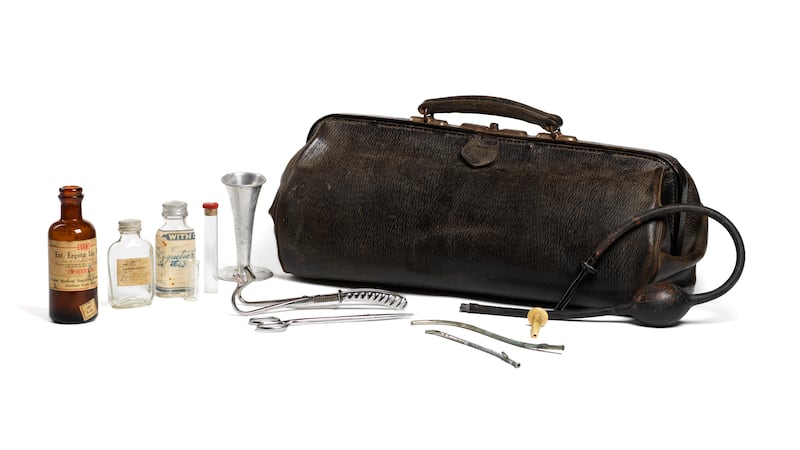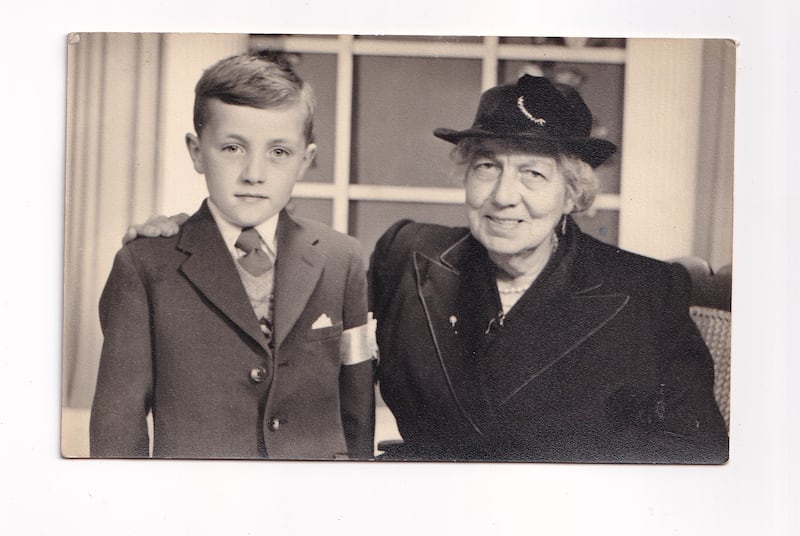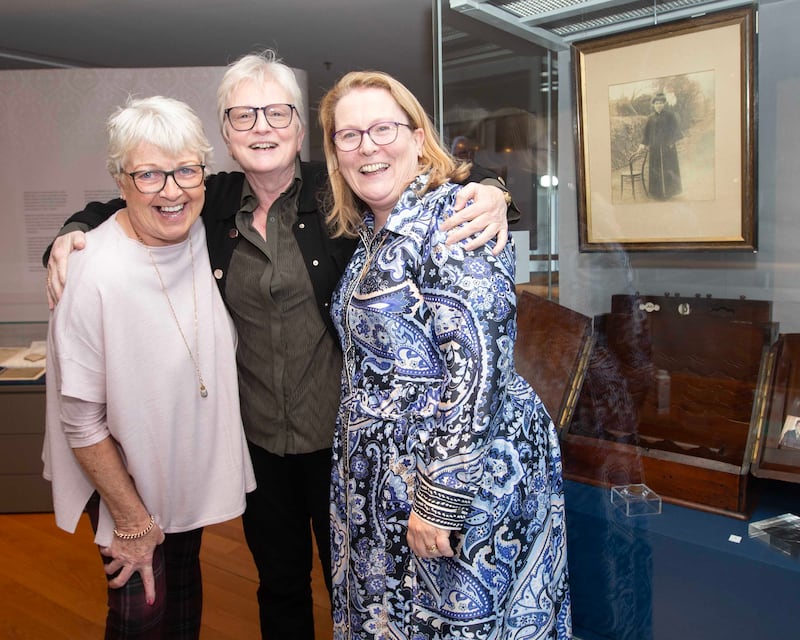Mary Anne Fanning worked as a district midwife and nurse in Co Kerry and later in Garristown, Co Dublin, and used the contents of her now 124-year-old leather midwifery bag to give medical aid to Volunteers during the 1916 Rising.
The bag is among the artefacts collected for a new exhibition celebrating the contributions of Irish community midwives in the early 20th century, which opened recently at the National Museum of Ireland – Country Life which is in Castlebar, Co Mayo.
Known as a familiar and welcome figure in her district, Fanning could be seen travelling with her midwifery bag in the basket on her bicycle in all sorts of weather. Sometimes her job kept her away from her own family for days and nights at a time. Later in her 48-year-long career, she got from one place to another by driving a Model-T Ford car.
Due to the importance of her work, the issue of Fanning’s petrol permit was raised in the Dáil during the second World War during a time of shortages, and received a response from the then minister for supplies, Seán Lemass. Documents detailing this exchange also feature in the exhibition, alongside some of Fanning’s medical instruments, midwifery certificates, a writing bureau and a christening gown from 1902 still in use by her family.
READ MORE
Fanning’s granddaughter, Pacelli Linscheid, expressed her pride at seeing her grandmother’s legacy honoured by the National Museum of Ireland.
“Her dedication to the community and to helping families in their most vulnerable moments is something that has inspired generations of our family,” Linscheid says.
The exhibition also features the stories of several other midwives and nurses from Clare, Cork, Galway, Mayo, Tipperary and Wicklow, researched by 22 groups in the Irish Community Archive Network (iCan).

Drawing on her own personal experience and family history, Emma Laffey, a healthcare assistant at the maternity unit in Portiuncula University Hospital in Ballinasloe, Co Galway, co-curated the exhibition, which is free to visit and will remain open until March 8th, 2025.
For Laffey, who also works as a community volunteer at the Skehana and District Heritage Group, her dedication to preserving the memory of local midwives became a passion project after the discovery of her great-grandmother, Sarah McBride’s, death certificate.
“On the certificate, it said that she had suffered from cardiac arrest due to maternal exhaustion,” Laffey says. This information, coupled with Laffey’s own background in maternity care was the catalyst for her community-based research.
“Understanding the women who guided mothers through that time was so fascinating to me… These women overcame so many barriers to get educated and work for themselves.”
Laffey points out that midwifery was one of the few professions a woman could continue after marriage at that time. “They were pillars of the community, and I am delighted they are being given the recognition they deserve,” she says.
The inspiration for this exhibition stems from Laffey’s award-winning book, An Bhean Ghlúine, which is the Irish translation of “woman of the knee”, a phrase commonly used to describe local community midwives during the 19th and 20th century.

Virginia Teehan, chief executive officer of the Heritage Council, which funded An Bhean Ghlúine’s publication, says: “Laffey’s book and this exhibition remind us of the importance of local midwives in providing culturally sensitive, community-based care, addressing unique challenges such as geographic isolation, limited access to medical facilities and the need for personalised care.
“Acknowledging these heroines recognises their self-sufficiency and preserves traditional healthcare knowledge within localities.”
Featuring several interactive elements such as audio recordings and touchscreen stories, the exhibition also encourages members of the public to contribute their own memories through a Midwives’ Memory Book. Through this moment of collective reflection within the exhibit, Laffey hopes to gain further insights into the role of midwifery in Irish communities.
Co-curator and National Museum of Ireland director of collections and access Éimear O’Connor imagines this opportunity for shared learning as effectively “taking the walls of the museum down” and starting a conversation among the local community.
Mary Anne Fanning: Remembering Our Community Midwives is free to visit at the National Museum of Ireland, at Turlough Park, Castlebar, Co Mayo, until March 8th, 2025

- Sign up for push alerts and have the best news, analysis and comment delivered directly to your phone
- Join The Irish Times on WhatsApp and stay up to date
- Listen to our Inside Politics podcast for the best political chat and analysis













